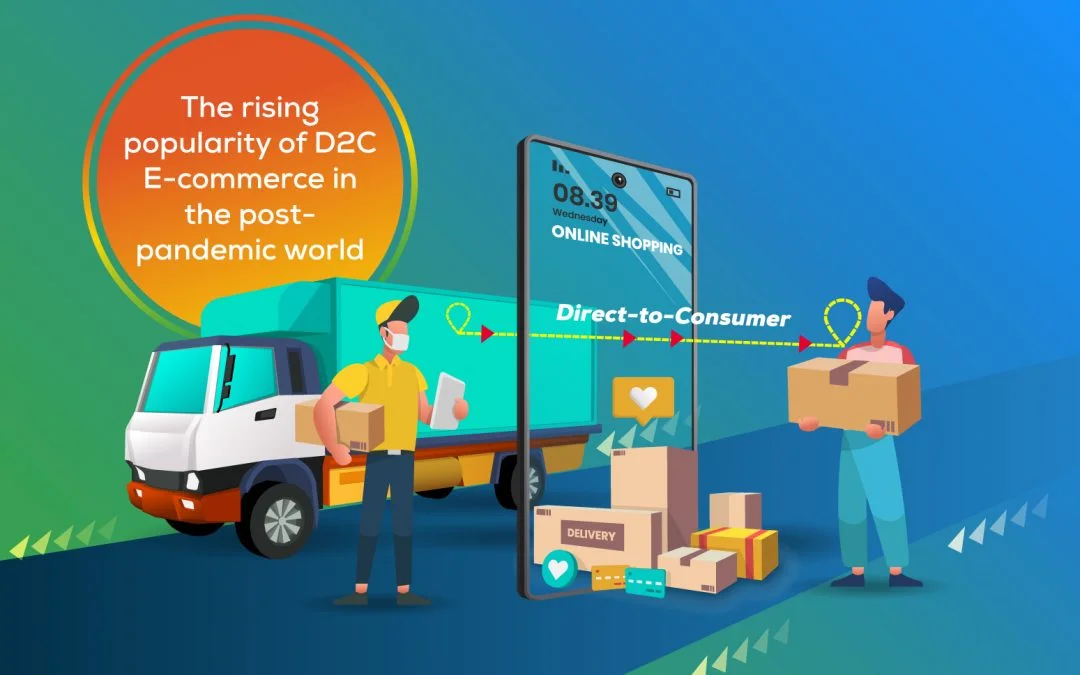- Design industry shaping loyalty programs
- Integrate easily and go live quicker
- Deliver hyper-personalized consumer experiences
Blue Rewards from Al Futtaim Group Shares Loyalty Success Stories and Evolution. Watch Podcast >
Capillary Announces 2nd Annual Captivate 2025 Summit: Transforming Loyalty Management with New AI Tech Read more >

As digital-first behavior becomes the norm, brands are quickly realizing that traditional retail channels and crowded marketplaces no longer guarantee growth. Instead, direct-to-consumer (D2C) e-commerce has emerged as a powerful, future-proof way to drive sales, build deeper customer relationships, and retain full control over the brand experience.
While selling through marketplaces might offer quick reach, it often comes at the cost of customer data, margin control, and long-term loyalty. That’s why brands are increasingly investing in D2C e-commerce platforms, which are built to manage end-to-end customer journeys and deliver seamless, personalized shopping experiences.
In today’s hypercompetitive digital economy, D2C is no longer just a distribution model, it’s a strategic growth engine. From fashion and beauty to CPG and electronics, brands across industries are using data, personalization, and loyalty to turn online stores into high-performing sales channels.
The D2C landscape in 2025 is more advanced and more competitive than ever before. According to recent market analyses, the global D2C e-commerce market is expected to surpass $242 billion by 2034! Fueled by growing consumer demand for frictionless digital experiences, faster delivery, and brand transparency.
Here are several other factors that are propelling this incredible growth:
At the same time, economic pressures and privacy regulations are pushing brands to reduce dependence on paid ads and third-party cookies. Brands are reclaiming customer relationships through owned D2C platforms.
These platforms not only offer better control over pricing, merchandising, and data, but also serve as the launchpad for community engagement, loyalty programs, and differentiated service.
While the D2C model offers undeniable advantages – greater control, higher margins, and deeper customer relationships, but it also brings its own set of unique challenges. D2C brands must navigate a complex digital landscape where growth isn’t guaranteed.
Here are five of the most pressing challenges brands must overcome in 2025:
With stricter data privacy laws and rising ad spends across platforms like Meta and Google, acquiring new customers has become more expensive than ever. Many brands are seeing their CAC eat into profitability, especially without a strong loyalty or retention strategy in place.
In saturated verticals like beauty, fashion, and wellness, it’s no longer enough to have a great product. D2C brands must now invest in branding, community-building, and storytelling to stand out from lookalike competitors. Commoditization is a real challenge that many brands face in today’s market and requires an approach beyond simple discounts to overcome.
Scaling a D2C operation often means building logistics, warehousing, and inventory systems from scratch. Or integrating multiple platforms that don’t always speak to each other. Inefficient fulfillment or delivery delays can quickly erode trust and loyalty.
Many brands find themselves juggling multiple tools for CRM, loyalty, marketing automation, analytics, and e-commerce management. Without a unified D2C platform, this fragmented setup leads to inefficiencies, missed insights, and inconsistent customer experiences.
Chasing month-over-month sales without investing in long-term brand equity is a trap many D2C brands fall into. Without a clear loyalty and retention roadmap, high churn rates can quietly sabotage growth.
By recognizing these 5 major hurdles early, D2C brands can be better prepared to build a sustainable and scalable e-commerce model.
As the market matures, brands need to evolve beyond basic e-commerce tactics and embrace smart, scalable growth levers that create competitive advantage.
Here are five powerful strategies that will define the next phase of D2C success:
Platforms like TikTok Shop, Instagram Checkout, and YouTube Shopping are transforming how consumers discover and buy products. Instead of routing shoppers from ad to website, native commerce eliminates friction by enabling purchases directly within the content stream.
Forward-thinking brands are designing content-to-commerce funnels that connect storytelling, influencer UGC, and seamless checkouts, which reduce drop-offs and amplify ROI on social spendings.
As third-party cookies fade away, brands that proactively collect and utilize zero-party data will have a significant edge. Paired with AI-powered personalization engines, this data enables brands to deliver relevant messaging, curated product suggestions, and dynamic offers across the customer journey.
Check Out Our Detailed Guide on Zero-Party Data & Understanding Data Privacy in 2025
The most successful D2C brands are building loyalty ecosystems that go beyond discounts. Such as tiered memberships, exclusive access, early drops, and experiential rewards. When loyalty is designed around emotional connection and value exchange, it becomes a long-term driver of sustainable growth.
Whether it’s through your own webstore, a mobile app, social media, or even offline touchpoints, customers expect a connected brand experience. Leading D2C platforms now integrate real-time inventory, CRM, and loyalty data to unify every interaction, so that the experience feels consistent no matter where a customer engages.
From in-cart reminders to WhatsApp re-engagement flows, channel orchestration is key to increasing both conversion and retention.
Creators have become the new-age brand ambassadors. Instead of big-budget influencer campaigns, many D2C brands are now leveraging niche creators, micro-influencers, and real customer content to build trust and authenticity at scale.
A future-ready D2C e-commerce platform should offer:
The D2C model has matured from a trend to a full-blown growth engine, therefore D2C brands that want to thrive in 2025 need a strong D2C E-commerce platform. Ones that provide scalable systems, tailored customer experiences, and smarter engagement.
Whether you’re refining your existing operations or scaling into new markets, now is the time to double down on a D2C E-commerce solution that’s data-driven, community-led, and platform-powered.

March 1, 2023 | 7 Min Read
Customer delight and unbelievable discounts contribute to 28

March 24, 2025 | 4 Min Read
Explore how D2C e-commerce platforms are revolutionizing bra

August 20, 2019 | 4 Min Read
In today’s world, a customer is accosted by brands at ever